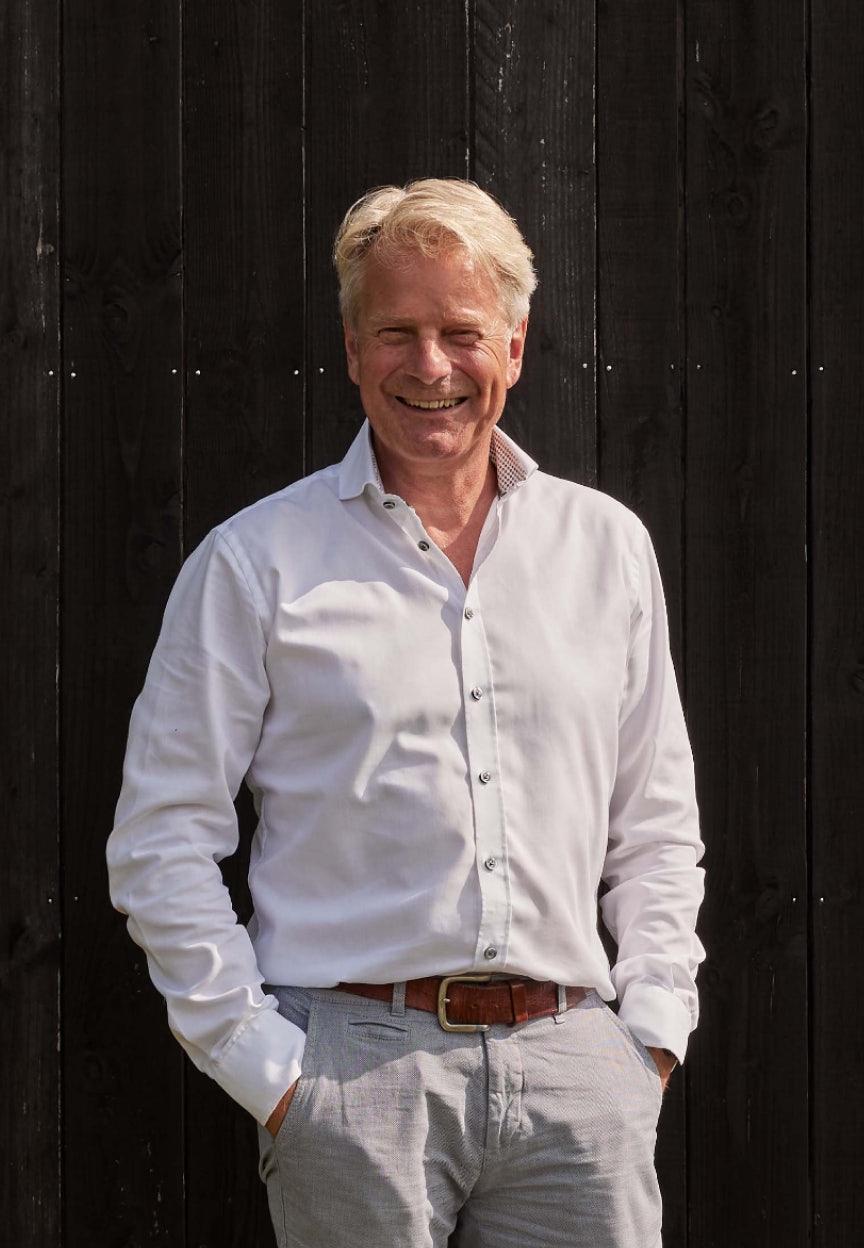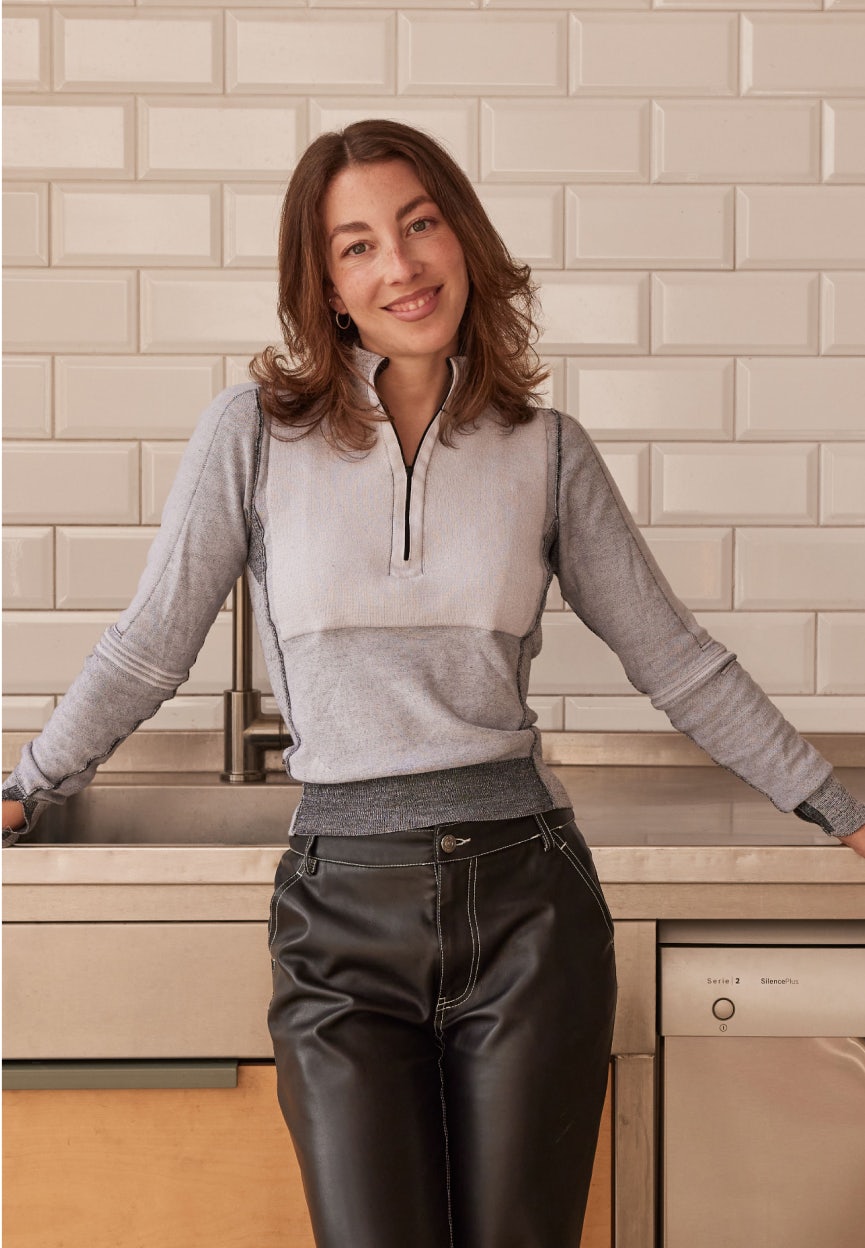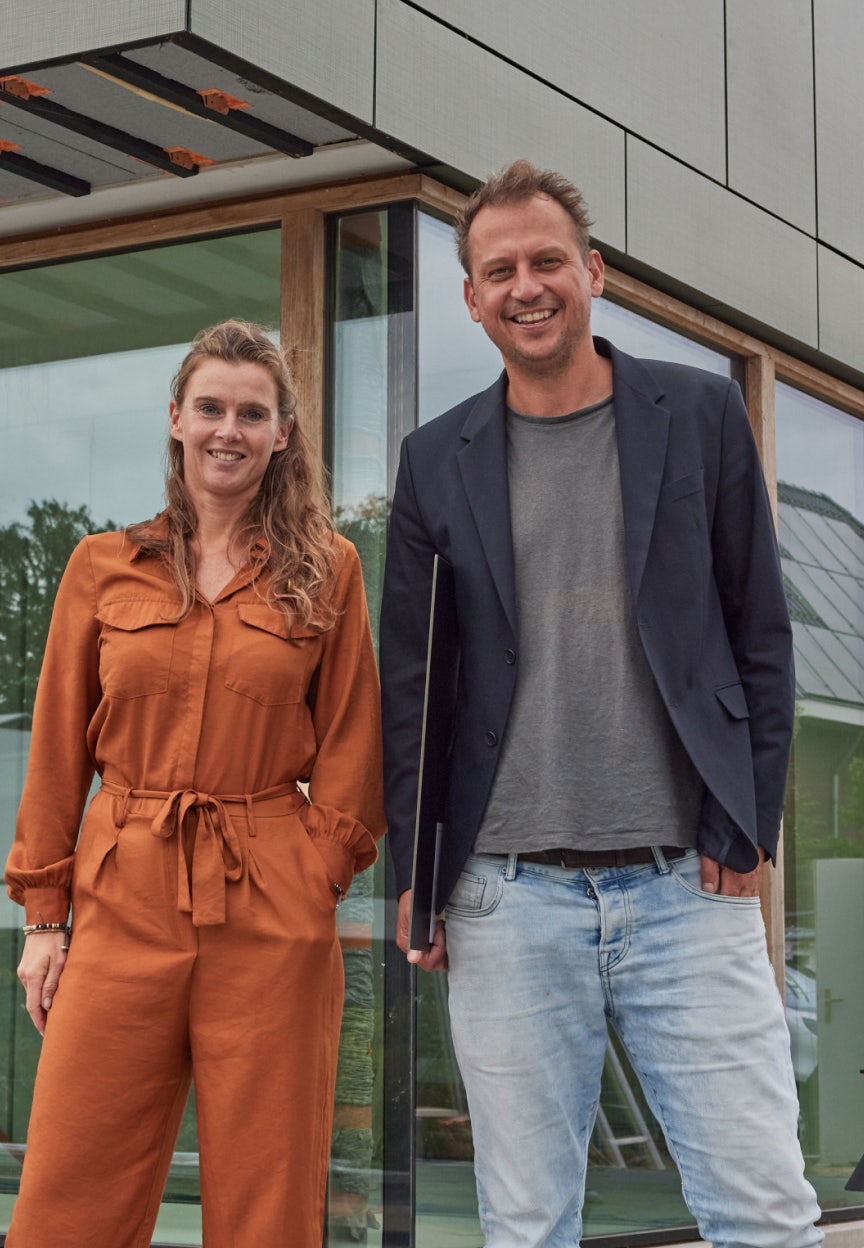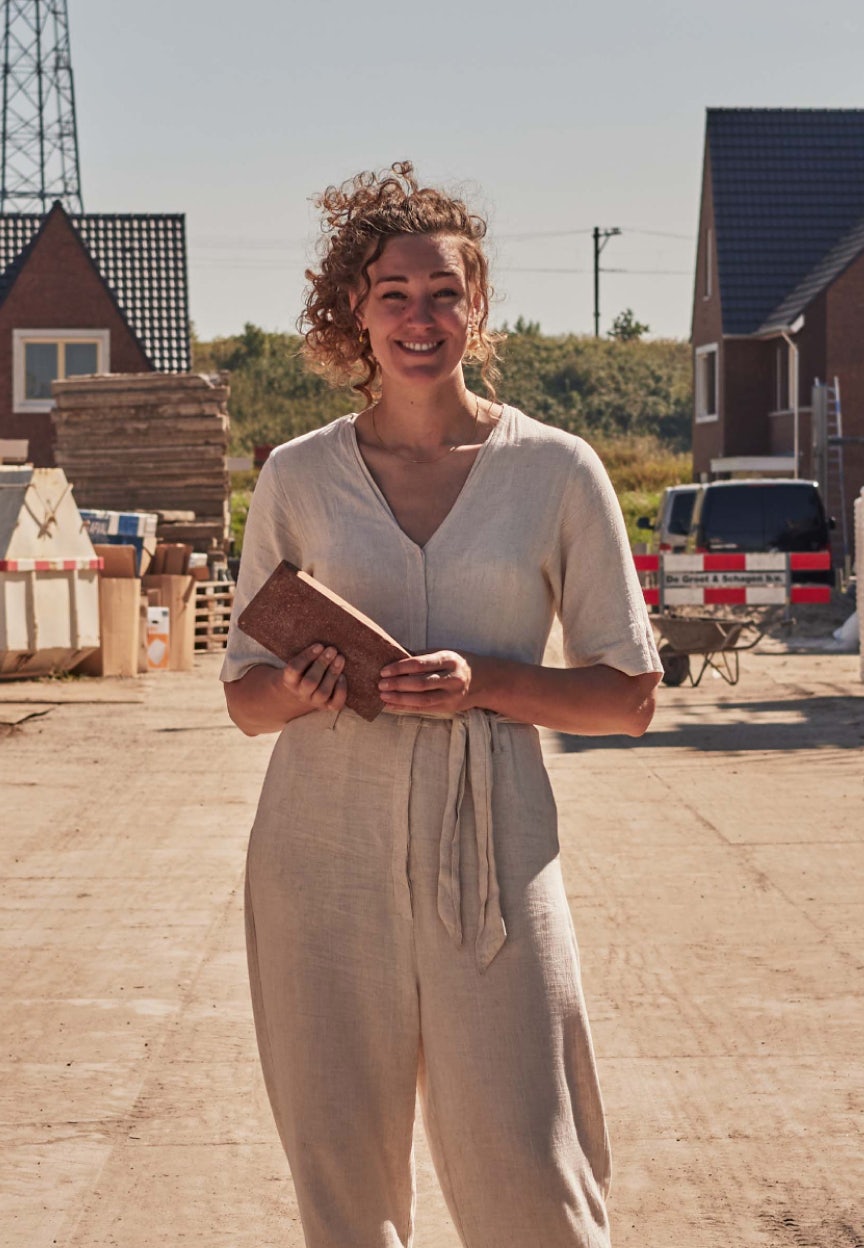
Forest
Guard
Dr. Muhammed Ali Örnek & Suat Batuhan Esirger
ForestGuard is an advanced wildfire prevention system. This device detects forest fires within the first 15 minutes and helps communities worldwide to protect their valuable forests and natural resources. An integrated monitoring system can help to manage a fire before it starts or turns into a full-blown fire.
Wildfires have a devastating impact worldwide, including environmental damage such as loss of biodiversity. Carbon emissions from wildfires are 20% of all emissions worldwide. In 2023 alone, 504,000 hectares of European land burned down, with 43% affecting preserved sites.
We spoke with the Turkish co-founders Dr. Muhammed Ali Örnek and Suat Batuhan Esirger. We talked about their drive to go on an adventurous journey from being architects to entrepreneurs, and all the challenges that come with it.

Hi Batuhan and Muhammed. Where did your journey start?
Batuhan: “I have a background in architecture. I always liked working with interactive design and technology. And I always had a passion for flying objects. My grandfather was an air traffic ground controller. My father was a pilot briefly. I have flown myself as well, but flying objects and the technology behind it fascinates me even more. That’s how I became interested in drones, and started using drones to support first responders during wildfires.”
Muhammed: “I graduated with a degree in Architecture from Istanbul Technical University as well, where I also completed a master's program focused on sustainability and green building technologies. My work often intersects with technology and sustainability. I’m driven by making environmentally friendly and technologically advanced solutions.”
How did two architects come together to work on wildfires?
Batuhan: “We met at the University and are working together since 2015. The start of ForestGuard was inspired by another project we did back in 2019. In this project we made trees “tweet” about the weather. It was located in a park to invite people to go outside in the post Covid era. It was measuring the air temperature and humidity and saying things like “Oh, it's a sunny day with 30 degrees, don't forget your hats”. Or “It's 18 degrees andabout to rain, don't forget your umbrella!” That kind of semi-automized, semi-random messages.”
Muhammed: “We were talking about implementing that same system to the whole city and maybe having an ‘Internet of Trees’ that can communicate with each other in the event of a disaster, such as a fire or an earthquake. We thought that these hubs could be used as a communication method. And then, in 2021, we had enormous wildfires in Turkey. It was the biggest one yet in our history.”
And that’s how an idea is born: an Internet of Trees.
Batuhan: “Yes. I had been manufacturing drones and flying drones as a drone pilot. I went to the burning areas to help searching and rescuing. As a volunteer drone pilot you see everything up close. I spoke to the people there in the field, both the rescuers and the rescued. I noticed that everyone was focused on extinguishing the fire, but not so much on a solution for before the fire happens or gets big and out of control. We revisited the idea of Internet of Trees, now adapting it to the forest. That’s when we started prototyping ForestGuard.”
With fire prevention we are combating the issue of global warming.
Wildfires are not just in Turkey. How big is this issue?
Muhammed: “In 2023, Europe experienced one of the worst wildfire seasons of the century, with significant environmental and economic impacts. Over 504,000 hectares of land were burned, equivalent to twice the size of Luxembourg. The wildfires also had a severe impact on protected areas, with 43% of the burned land affecting preserved sites with Europe's most valuable species and habitats.”
Muhammed: “We started working with a paper facility, and they were able to save 1400 tons of wastepaper from burning. They store their wastepaper in open air storage facilities and there isn't any sensor that detects the fire in this open air scenario. Our sensors were able to find out about the fire four hours before the visible smoke. They have thermal cameras, but we were able to warn them even before the thermal cameras detected anything. This has prevented a loss of an estimated €6 million of facility damage. And for the forest and environmental part, we were able to save about 200 hectares from burning.”

You designed a communication device that can be attached to a tree. Tell us more.
Batuhan: “We designed a small solar paneled box with integrated satellite communication and sensors in it. It detects smoke and other flammable fumes. You strap the device on a tree, a pole, a surface, whatever you have, and it works. In a large area, you attach a device in every 16 hectares at a height of three meters. In high-risk areas you place one at every hectare. The devices communicate with each other.
Muhammed: “Our team has not only developed the device, but also the technology necessary to maintain consistent and accurate monitoring in a dashboard. Through a machine learning algorithm, it is possible to distinguish whether smoke detected in a forest originates from a combustible engine, a cigarette, or an actual forest fire. So, if the processed information shows that the abnormality it detects is a wildfire, authorities are alerted and can intervene.”
To signal danger the devices are connected to a satellite network. Can you explain how this works?
Muhammed: “We started with another communication protocol that we sometimes still use. It’s a mesh network that you put on different spots and the devices “talk” to each other. They send their data to a gateway modem, which sends all the packed data to the Internet. But if you don't have any kind of GSM coverage, you loose connection.”
Batuhan: “Turkey experienced an incredibly bad earthquake back in 2023 and some of our deployments went offline due to the malfunctioning GSM towers. A fire can knock them out as well. We saw this as a warning that we had to find a way to become totally infrastructure free on the communications end. At an event about connectivity we met with a satellite company and we enrolled into an early stage startup program. We were incredibly lucky to become an early adopter in that sector of communications.”
Muhammed: “In the latest design we have global coverage because we work with solar panels and integrated satellite communication. Luckily, the costs of satellite communication aren’t even that must higher compared to GSM, because we only send a small amount of data per device. The main challenge for us was that now we had to change our devices internally to adapt to satellite communication. The sensors stayed the same, and most of the algorithms stayed the same, but we had to change the whole communication protocol.This allows for our devices to send their data wherever they are. That can be in Turkey, in Madrid or in Amsterdam, you name it. If something abnormal happens, our devices send their data to the satellite, then it's sent back to the ground station and processed in our servers.”
Our sensors were able to find out about the fire four hours before the visible smoke.
Your product needs to work in harsh conditions, and you don’t want to harm the environment with your devices. How do you design for that?
Batuhan: “We had a lot of prototypes and field tests. The main concern was for it to be durable to all environmental conditions, not just fires. Also to people and animals. Animals want to chew on it, have a nest on it. And people want to take it away, shoot it out of the tree, you name it. There are incredibly diverse problems when you put something in the wilderness.
In the earliest prototypes I was having the ForestGuard strapped to my head, walking around with it, testing the communication and sensors.
The first design had a screen and buttons, which we eventually left out because we wanted it to be as maintenance free as possible.”
Muhammed: “From the beginning, we tried to reduce the waste of our design, so we have designed all our electronic circuits in a modular way. If any module breaks or malfunctions, we only have to change that specific part and avoid any unnecessary replacement of the whole device. We are using precious metals on it and designed it with durability and sustainable aspects in mind, using 99% recycled materials.”
Batuhan: “We tend to say that our device will work for five years to manage the expectations, as we are still a relatively new player in this field. But in the spec sheet, based on data, the lifetime is over ten years.”


Is your device being used already? Are you preventing forest fires?
Muhammed: “In 2023, Europe experienced one of the worst wildfire seasons of the century, with significant environmental and economic impacts. Over 504,000 hectares of land were burned, equivalent to twice the size of Luxembourg. The wildfires also had a severe impact on protected areas, with 43% of the burned land affecting preserved sites with Europe's most valuable species and habitats.”
Muhammed: “We started working with a paper facility, and they were able to save 1400 tons of wastepaper from burning. They store their wastepaper in open air storage facilities and there isn't any sensor that detects the fire in this open air scenario. Our sensors were able to find out about the fire four hours before the visible smoke. They have thermal cameras, but we were able to warn them even before the thermal cameras detected anything. This has prevented a loss of an estimated €6 million of facility damage. And for the forest and environmental part, we were able to save about 200 hectares from burning.”
So, you collaborate with governments and private entities?
Batuhan: “Yes, we are working with governmental organizations, both local and national. And we are now also working with resort hotels, manufacturing facilities, insurance companies, and energy distribution companies – they have energy lines in the forested areas. We’re supported by insurance companies and that’s important. Their support makes it more attractive for other organisations to adopt a system. It means they get better insurance coverage.
Muhammed: “I’d like to add that our challenge also lies in scalability. Right now we are not yet ready to produce high amounts or on a global scale. To make this possible, like Batuhan said, we need to expand our team and continuing R&D for new devices for other disaster and environmental applications. And for that, we need financial support from seed investors or funding from governments.”
Batuhan: “Also, on our roadmap we have an app that will integrate the whole installation process. We try to make the process of using our device as painless as possible. Developing this app costs time and resources as well.”
What other challenges are ahead? What are your main dilemmas that you want to share with our community?
Batuhan: “We hope to have sufficient funds to expand our team soon and to improve the design even more. Maybe we can add more devices to the collection in the near future already. ”
Muhammed: “I’d like to add that our challenge also lies in scalability. Right now we are not yet ready to produce high amounts or on a global scale. To make this possible, like Batuhan said, we need to expand our team and continuing R&D for new devices for other disaster and environmental applications. And for that, we need financial support from seed investors or funding from governments.”
Batuhan: “Also, on our roadmap we have an app that will integrate the whole installation process. We try to make the process of using our device as painless as possible. Developing this app costs time and resources as well.”

How do you see the future? No wildfires anymore?
Muhammed: “What’s very relevant is that we are collecting environmental data. On our notification system, a dashboard, you can access alert parameters, measure volotile organic compounds like chemicals from paint or fuels, carbon dioxide and air quality. This is now used to detect, prevent and eliminate the wildfires. But we can also use this data for other purposes. Think agricultural impact, meteorological change, and climate change.”
Batuhan: “We don’t have sufficient data yet, but we are focusing on the collection and processing of such data now. We are collaborating with universities, institutes and scientists to track and monitor this kind of research. In the future we hope to support many other purposes, even things like monitoring birds routines or endangered animals and flora.
Whats also exciting to share is that we’re opening a new European hub in Nice, France. This is a forested and high risk area for wildfires.”
To conclude, what message do you want to share with everyone?
Batuhan: “Most of the detection systems for wildfires are focusing on the prevention of symptoms, but we are trying to reduce the risk levels. We are focusing on the source.”
Muhammed: “There's an acronym about our way of working. If your bathroom is flooded, what will you do? Will you close the faucet or will you mop the floors? Many solutions in the world focus on mopping the floor, but to solve environmental issues today we need people to close the faucets. We are trying to use all the tools that we have, and we think that we can all somehow help in that journey. Everyone in their own way.”
Brèves

Secrid Talent Podium - Celium
Celium™ is a customizable bio-textile that might well become the new gold standard for fashion, footwear, sportswear, and automotive applications. Polybion is a new company that found a way to produce this versatile and natural material made of cellulose, cultivated with bacteria that eat agricultural waste.

Secrid Talent Podium - Electric Skin
Electric Skin is a speculative idea that can change how we relate to daily electronic objects, such as our phones. A team of female biodesigners use bacteria that naturally produce electrical proteins for use in electronics. It could be possible to make compostable electronics by integrating these proteins into algae-based biomaterials.

Secrid Talent Podium - Fungi Force
Entrepreneur Frans van Rooijen and scientist Dr. Michael Sailer are launching a varnish made from natural raw materials.

Secrid Talent Podium - Vorkoster
To combat food waste, Kimia Amir-Moazmi is working on a product that allows consumers to see for themselves whether food is still safe to eat.

Secrid Talent Podium - Solarix
Solarix designs and produces aesthetic solar panels as façade cladding.

Secrid Talent Podium - Claybens
Emy Bensdorp is developing a technique to transform clay soil contaminated by PFAS into 100% clean bricks.

